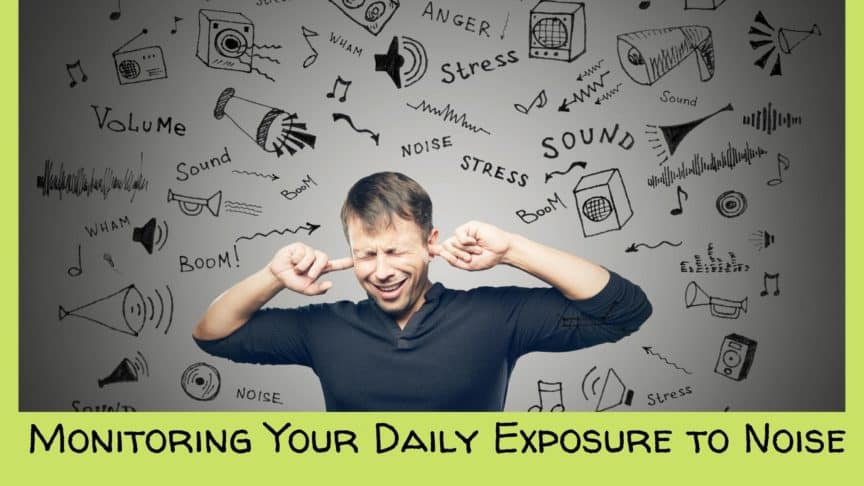- How to Care for Infants With Hearing Loss - April 15, 2024
- Hearing Aid Tips for Runners - April 5, 2024
- Overcoming Misconceptions Around Hearing Aids - March 27, 2024
In the many thousands upon thousands of years during which our ears evolved, loud noises were at a minimum. Our post-industrial lifestyle has become decidedly noisier. With the power of machinery and amplification, our ears can handle sounds our early ancestors never thought possible. It is truly the magnificence of our modern hearing system that manages to both hear a quiet whisper and enjoy a loud rock concert. The range of those noises is incredibly vast!
Our ears work so well at handling these opposites, that we rarely pay any attention to the volumes of our everyday life. For the most part, our ears and hearing systems can adapt, but over time and with steady exposure to too loud noise, our hearing takes a beating.
Noise-induced hearing loss
While age continues to be the primary predictor for hearing loss, the second leading cause is excessive noise. Many people can credit a mixture of the two causes for their later onset hearing loss.
The inner ear cells are vitally important to our sense of hearing. They receive the noise of the external world and transmit it as sound information to the brain. These cells are delicate and non-regenerative, which means that once they are damaged, they do not repair themselves. Instead, we simply hear less.
Noise-induced hearing loss can happen all at once in an extremely loud incident, like an accident or explosion. It can also happen slowly and over time, with repeated exposure to too loud sounds. In both cases, it is irreversible, though it can be treated.
Dangerous Decibels
Medical experts agree that sounds below 85 decibels, the unit of measurement for sound, are safe for our ears. To put that into context, a conversation clocks in at about 60 decibels while a whisper is 30 decibels. The noise of heavy traffic from inside your car is around 80-90 decibels, while a lawnmower is 90 decibels.
Along with the importance of how loud something is, the duration of exposure is also important to the equation. The louder something is, the less time you should be exposed to it. At 100 decibels, the sound of a school dance, you should keep exposure below fifteen minutes. A loud dance club might be as loud as 120 decibels, a level at which you should keep exposure time to five minutes.
You can be exposed to a sound over 85 decibels and not experience hearing loss, however, if you work in a factory and are exposed to loud machinery over 85 decibels for more than eight hours a day and over the course of 25 years, you will probably incur a noise-induced hearing loss.
Common professions with loud noise
When we think of noise-induced hearing loss, we might think about the standards set by the Occupational Health and Safety Administration (OSHA). Through federal laws and oversight, this agency keeps workplaces safe from excessive noise exposure, creating protections for workers when noises are above 85 decibels.
In professions like factory work, farming, and the military, workers must be given hearing protection, frequent breaks, or the installation of sound barriers to minimize exposure.
Recreation and hobbies with risks
Unfortunately, we also engage in activities that carry heavy noise burdens willingly. We often pay for them! Rock concerts routinely exceed 100 and even 120 decibels of noise, even symphonic concerts can be noisy, reaching 100 decibels easily.
Sports stadiums have recently been in the spotlight for their extreme volumes. Season ticket holders beware, a rowdy crowd can bring the noise level well above 120 decibels. Recreational shooting, ATVs, and snowmobiling are all hobbies that require hearing protection if you want to keep healthy hearing on your side.
Earbuds and hearing health risk
A new culprit might be emerging in the field of hearing risks. These days, people are plugged into their devices more than ever before and most are wearing earbuds. The implications are too new to be sure, but an overreliance on earbuds may be a habit that can seriously harm your hearing.
How to monitor your noise environments
Luckily, we can also monitor our sound usage on our smartphones and devices. On an iPhone, simply open up the Health app to get a peek at your listening habits. It will give you a rundown of your earbud decibel exposure and warn you if it’s too loud.
You can turn your smartphone into a decibel measuring device by downloading special apps like Decibel X. With these, you can measure your real-world noise exposure, whether it’s at the Friday night football game or your local theater.

